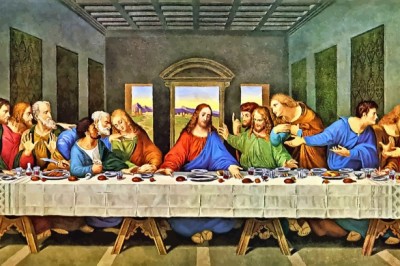What’s the difference between CMYK and RGB?
CMYK and RGB are two different colour models, and understanding the difference can mean producing a great-looking insert rather than a muddy, disappointing one. Well have to delve into a little science to explain this difference.
The RGB colour model is used by monitors, televisions, scanners, and digital cameras. A monitor uses very small bands of red, green, and blue light to generate colour. RGB is additive because when you add all three colours together, you get white light; when you turn off all three lights, you get black. By mixing varying amounts of red, green, and blue light, you can create most other colours.
However, the paper used for a magazine, CD booklet, DVD sleeve cant generate light like a computer monitor. It relies on reflected light, and the subtractive colour model CMYK. When you add cyan, magenta, and yellow together (CMY), you get a colour close to black, and when you dont lay down any ink, you get white-that is, the white of the paper. A fourth colour, black, is added for economical and practical reasons, and is referred to by K so as not to be confused with blue. By mixing varying amounts of cyan, magenta, yellow, and black inks, you can create most other colours. All commercial, full-colour printing uses CMYK inks.
So why is the difference important?
Most colours created on the RGB monitor can be duplicated using CMYK inks, but not all. As your RGB monitor is generating light, it can create some bright colours that cant be duplicated on any CMYK printing press. Paper can only reflect light, so if you print the super-bright RGB colours in CMYK, they get a lot duller.
If youre designing artwork in an RGB colour space, well have to convert it to CMYK to print. Depending on your artwork, the colours might shift a little or a lot.
When sending artwork for printing you ought to provide all your images in CMYK. This way, if there are any colour shifts, youll be able to see them and take steps to correct the problem. If you supply RGB images, your prnter you make the CMYK conversion, and hopefully show you a proof. If you want to make any changes to your images at that point, your job may be delayed and incur additional charges. Its much better for you to supply CMYK files up front.
Whats the difference between process and spot colours?
Process colour uses translucent CMYK inks laid on top of one another to fool your eye into seeing other colours. A spot colour ink is a specially-mixed hue that is not made by combining two or more inks, but rather is a single ink of a specific colour. Spot colours can be brighter or more saturated than process colours, or have special properties, such as metallic gold or fluorescent green.
Will the printing on my CD / DVD match my booklet or digipak?
All packaging is printed in HP Indigo process (CMYK) colour, while standard on-disc printing is done with inkjet inks. While the processes are similar, some colours-blue and orange in particular-look very different due to the different inks and different substrates. In general, the HP Indigo prints are brighter and more saturated than their inkjet equivalents.
If matching the disc to the rest of the package is important to you, we can provide you with proof copies of all your items, however because of the different processes involved we cannot guarantee we will be able to provide you with an exact match.
What are the differences between printing on the disc face and printing the rest of the packaging that I should keep in mind when designing?
Discs are printed with a different process than the rest of the packaging. Booklets, digipaks, and jackets are printed with HP Indigo (CMYK) inks, using a high-quality process liquid electrostatic lithography. Discs are printed either with Inkjet printers or for larger runs (over 1000) are silkscreened. There are a couple of key differences to keep in mind:
* The tonal range that we can hold while silkscreening the discs is 15-85%. Tones lighter than 15% may blow out to zero, and those darker than 85% may fill in completely. As a result, we do not recommend using very dark or very light photos on the disc.
* High-contrast images work best. Subtle changes in tone can be lost in the silkscreening process.
* Gradients or blends do not print well, and can look uneven or blotchy. We strongly recommend avoiding gradients or blends on the disc. Gradients that look smooth on CD packaging dont translate well to the silkscreen printing process on the disc. Highlights and shadows dont offer smooth transitions, instead dropping off dramatically and resulting in an uneven, rough-looking line.
* Due to registration issues with silk-screening, we cannot print overlapping screens such as duotones or spot colour mixes (e.g., 25% PMS 115 and 65% PMS 215) on the disc.
* The line screen on the disc is 100 lpi, which produces lower-quality images than the 200 lpi printing for the offset-printed packaging.
Here is a comparison of a photo printing on a booklet and printing on a disc. The image on the disc loses details in the piano players coat, and the highlight on his head. The subtle variations in the background images are also lost. Expect to lose detail and overall image quality if you print an photo on the disc.
























